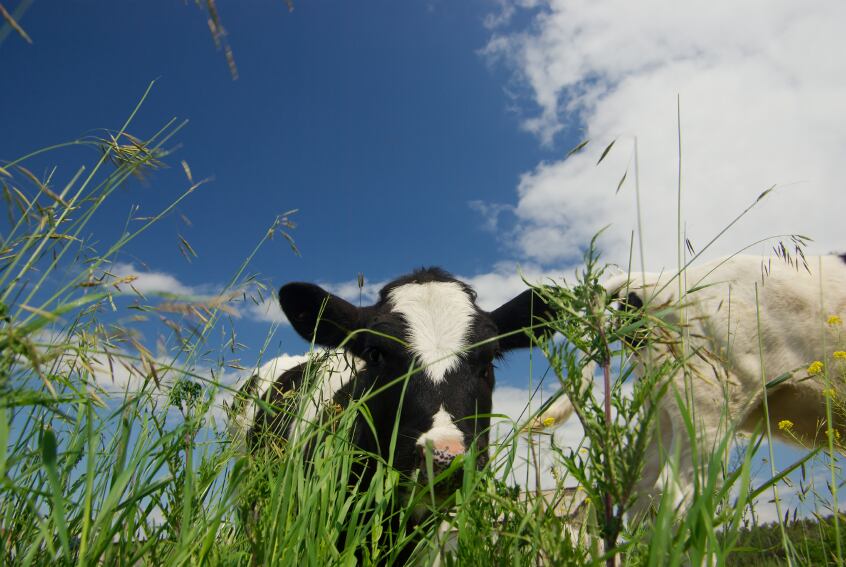Scientists at the National Food Institute of the Technical University of Denmark have developed a way to make milk protein ‘without the use of a single cow’. According to the researchers, ‘a cell factory does all the work’.
Whey from milk processing contains large quantities of sugar, which are currently either discarded or used as animal feed. The Danish researchers have developed a process that sees bacterium convert this waste sugar into milk proteins or other ingredients in what they describe as a ‘cell factory’.
The cell factory can turn a side stream such as lactose into butter aroma, for example. Simply put, the bacterium are fed the milk sugar and then ‘spit out’ butter aroma – a food ingredient that food companies can use as flavouring in different products, from cookies to sauces.
To produce the butter aroma, the researchers have modified certain processes that naturally take place inside the bacterium.
The bacterium has been genetically modified. Some genes have been removed whereby routes in the metabolism have been redirected and the enzymatic reactions have been changed.
“Basically, the lactic acid bacterium eats the milk sugar, lactose. In the cheese process the bacterium converts the lactose through a series of enzymatic steps and then spits out the desired compound. In cheese production this compound is lactic acid. In our engineered strains these are various chemicals/ingredients,” Professor Peter Ruhdal Jensen, Head of Research Group at the National Food Institute, told FoodNavigator.
The Institute’s researchers have also developed a patented technology based on a cell factory that uses lactic acid bacteria to turn residual lactose from dairies into ethanol – the alcohol contained in spirits.
Professor Jensen explained that the potential of this technology extends across various ingredients and side streams.
“Lots of ingredients could be produced in this way, and certainly most protein ingredients. We have already shown that we can produce several food ingredients and other chemicals from dairy side-streams. Our microbial platform is a modified version of the cheese bacterium Lactococcus lactis which we can relatively easily amend to produce other valuable substances.
“In the future scenario, we will not only use the side streams from dairies, breweries, and other food production. We will also utilise all resources from the agricultural sector."
GMO: The elephant in the room?
The Institute says it can make cell factories in two ways: ‘natural’ and ‘by means of genetic modification’.
The natural method sees researchers screen for suitable bacterium. “The good thing about the natural method is the industry can freely use it to produce food without labelling.” However, there is a significant draw-back. The researchers are essentially ‘looking for a needle in a haystack’ – meaning that it is a ‘very time-consuming process’.
Genetic modification, on the other hand, is ‘much faster’. But the ingredient produced will have to undergo an authorisation process in the European Union and will be subject to labelling requirements because it is a GMO, the Institute stated.
However, Professor Jensen said he does not expect ingredients produced in this way to face the same backlash that greeted the development of GMO crops in Europe.
“The GMO is not a part of the final product,” he stressed. “It is therefore equivalent to the GMO production of rennet which most people eat on a daily basis.”
He believes that there is another strong argument in favour of cell factories: sustainability. “I think in general the young generation is more concerned with climate issues than GMO.”
‘This will have a positive impact on emissions’
Indeed, with concerns over the climate crisis high on the agenda, the idea that you can produce high protein food without the need for animal agriculture could prove appealing to many.
Currently, animal agriculture accounts for 14.5% of all GHG emissions, according to the FAO. It would appear consumers are willing to change their dietary habits to combat this. Concern over the sector’s environmental impact has been credited as one of the drivers behind the plant-based boom, for instance.
By utilising side-streams that would otherwise be wasted, the cell factories also improve the efficiency of food production, valorising waste materials and boosting production levels.
Such innovation will be needed to provide enough high-quality food to cater to the growing global population without exhausting the planet’s finite natural resources.
"The ambition is to learn how to make the most of all side streams. This will have a positive impact on our emission of greenhouse gases. And when all comes to all: the greater utilization of the foods we produce, the smaller impact on our agricultural land,” Professor Jensen concluded.

